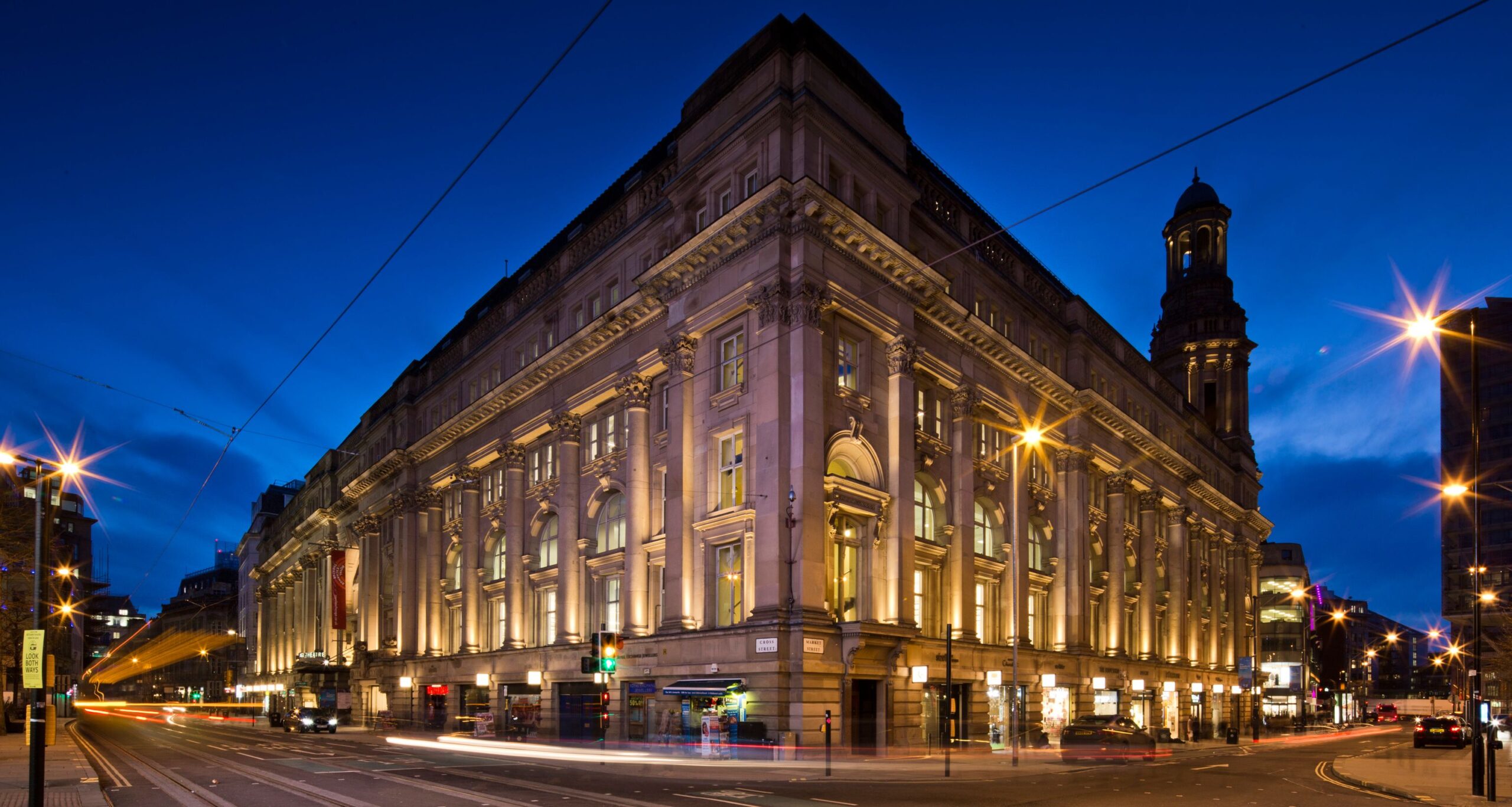Stop 6: Royal Exchange
From Trading Floor to Suspended Stage
The largest room for commerce in the world when built in 1874, the Royal Exchange symbolizes both Manchester’s industrial power and its cultural transformation. The trading hall covers over 3000 square meters, with its innovative glass dome and soaring columns demonstrating Victorian engineering capabilities. The building survived both WWII bombing and the 1996 IRA blast, though the latter necessitated significant reconstruction that brought opportunities for modern intervention.
The most striking modern addition is the 150-seat theatre module, designed by Levitt Bernstein in 1998. This seven-sided steel structure appears to float within the Great Hall, suspended from massive Victorian columns. This engineering feat demonstrates how contemporary architecture can inhabit historic spaces without compromising their character. The theatrical “pod” is effectively a building within a building, allowing the historic trading floor to remain visible while creating a thoroughly modern performance space.
Look for the original trading boards still visible on the walls, the restored marble columns, and the contrast between the Victorian cast-iron framework and modern steel theatre structure. The basement Exchange Street entrance shows how modern access requirements have been integrated into the historic fabric.
To Stop 7, Exchange Square: Exit via St Ann’s Square and Cross Street.

